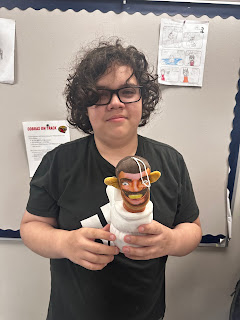Blog Post #18 - Obstacles

Obstacles are roadblocks in trying to achieve something. Obstacles can come in many forms— emotional, physical, moral, or even logical. A form of emotional obstacle would be something such as the loss of a loved one. A physical obstacle would be well, a roadblock, which doesn't allow you to pass. A moral roadblock could be a religious value for example, which could prevent you from doing certain things. A logical roadblock could be something such as not knowing how to do a math problem. Picture of a roadblock, from impactplus.com In my case, an obstacle is something that prohibits, delays, or prevents me from progressing in my project. A major obstacle I have faced is coming up with new topics and ideas to write about, and research for my blog posts. A solution I have come up with while trying to push through and overcome this obstacle is to go through my classwork and look for vocabulary terms and topics to write about. An example of this I have taken inspiration from is a ...





.gif)



